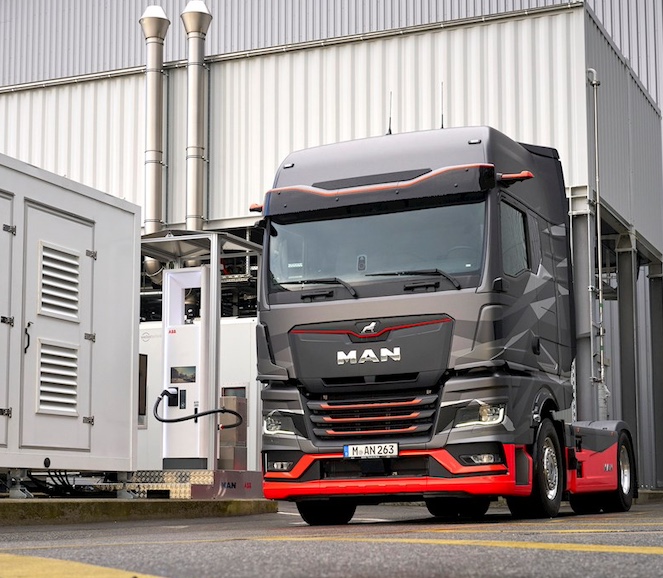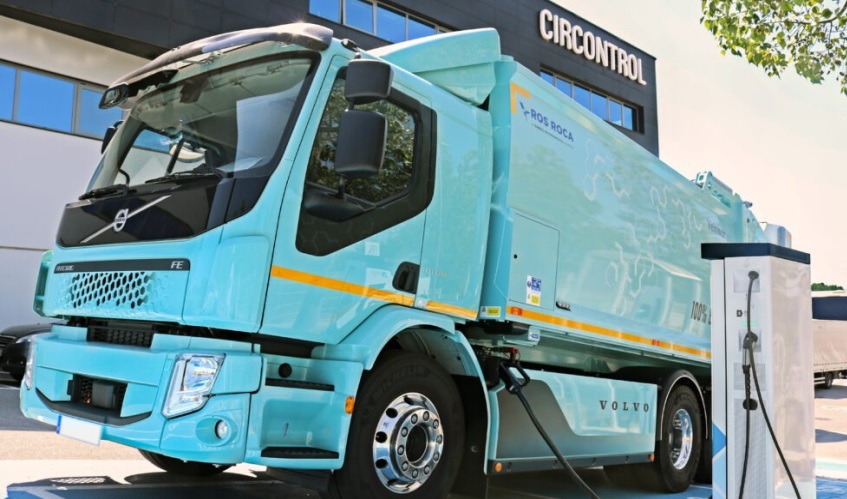Avere-France, in conjunction with the French Union of Electricity (UFE), the International Council on Clean Transportation (ICCT), the Institute of Mobility in Transition, and Transport & Environment (T&E), published a practical document addressing frequently asked questions about heavy-duty vehicles.
According to the association’s estimates, between 45,000 and 60,000 charging points will be needed to be installed for trucks and light commercial units by 2025 to support the transition.
These stations should be located in warehouses, although they will also need to be expanded on main roads, logistic centers, and public spaces.
Furthermore, it is worth mentioning that the electrification of interregional transport and journeys exceeding 200 kilometers will depend on the development of charging infrastructure along routes and at destinations.
Avere-France indicates that the expansion of the charging network in the coming years will be driven by public action supported by European regulation, as well as initiatives from manufacturers and highway companies.
It is noteworthy that the first Megawatt Charging System (MCS) stations will be installed in Europe starting in 2024, for the initial long-haul trucks equipped with the system, aiming to charge ten kilometers of range per minute, equivalent to 450 kilometers in 45 minutes.

The first prototypes have already begun.
For instance, in Germany, ABB E-mobility and MAN Truck & Bus presented their earliest prototype of the MCS.
The new MCS charging standard is technically designed for charging capacities of up to 3.75 MW at 3,000 amperes (A), which demonstrated a charging power of over 700 kilowatts with prototype charging technology.
The high-power charging system designed for electric heavy-duty vehicles enables faster charging times and higher ampere capacity.

During the presentation, it was highlighted that the battery charging time from ten percent to 80 percent was completed in half an hour, evidencing the system’s efficiency.
Additionally, the first Kempower devices will be introduced throughout 2024.
The “Liquid-Cooled High-Power Satellites” features MCS charging connectors and two 600-kilowatt power units each.
The initial delivery of the solution will be 1.2 MW. This system is designed to provide high-power charges needed for larger electric trucks.
How is the adoption of eTrucks progressing?
While electric heavy-duty vehicles are still rare and their technology remains relatively unknown, they will play a key role in decarbonizing road freight transport.
Additionally, their deployment will be accelerated by the implementation of circulation restrictions in low-emission zones (LEZs) and corporate social responsibility (CSR) policies from freight operators.
Moreover, it’s worth noting that according to most manufacturers’ forecasts, 50 percent of trucks on the market will be electric by 2030.
Despite the low market share of these vehicles in Europe (0.1 percent), a rapid increase in adoption is anticipated, starting with those intended for urban and suburban operations and later with the onset of sales for road units.
In 2023, there were 3,163 electric trucks registered on the continent.
Of this total, 552 were registered in France, representing a threefold increase compared to 2022.
Regarding range, the current offer already meets some of the needs of urban trucks, with ranges of up to 250 to 300 kilometers, enabling fleet electrification to begin immediately.
Moreover, in France, Renault Trucks, DAF, and Volvo offer 16-tonne electric units, whereas most manufacturers offer heavy-duty vehicles ranging from 19 to 26 tonnes, with increasing levels of autonomy.
What are the benefits of eTrucks?
The integration of trucks into the electromobility industry brings numerous advantages.
Firstly, they significantly contribute to improving air quality and decarbonizing freight transport and the economy overall by reducing nitrogen oxide (NOx) and carbon dioxide (CO2) emissions.
Also, they emit 80 percent less NOx and have a considerably lower carbon footprint throughout their lifecycle compared to diesel, reaching an 85 percent reduction by 2030 according to Carbone 44 analysis.
Moreover, they help decrease the primary source of stress in large cities: noise.
For example, the Renault Trucks D 16-tonne generates 85 percent less noise pollution than combustion engine cars.
Need to produce batteries in France
Currently, 88 percent of lithium-ion batteries are manufactured in Asia, primarily in China.
Therefore, the demand for this component necessitates its production in Europe. Hence, the European Battery Alliance emerged and launched in 2017.
Its objective is to develop this industry, both to bolster energy sovereignty and to meet the goals of the Green Deal.
Avere-France states, “Since then, around forty gigafactory projects in Europe have been announced and are in development.”
For instance, Northvolt, a European pioneer in the battery industry established in Sweden since 2015, delivered its first batteries in 2022, with its main customer being the Traton Group, and thus, in the long run, the MAN and Scania brands.
In France, four of these battery gigafactories are in development: ACC, Verkor, Envision AESC, and ProLogium.
ACC, a joint venture of Total Energies, Saft, Stellantis, and Mercedes, inaugurated its first factory at the end of May 2023.
According to Avere-France’s study, these industrial projects do not yet cover battery production for these heavy-duty vehicles.
Notably, the batteries for Renault Trucks’ units, manufactured in France, are currently produced in South Korea (for the cells) and in Europe (for the pack).







